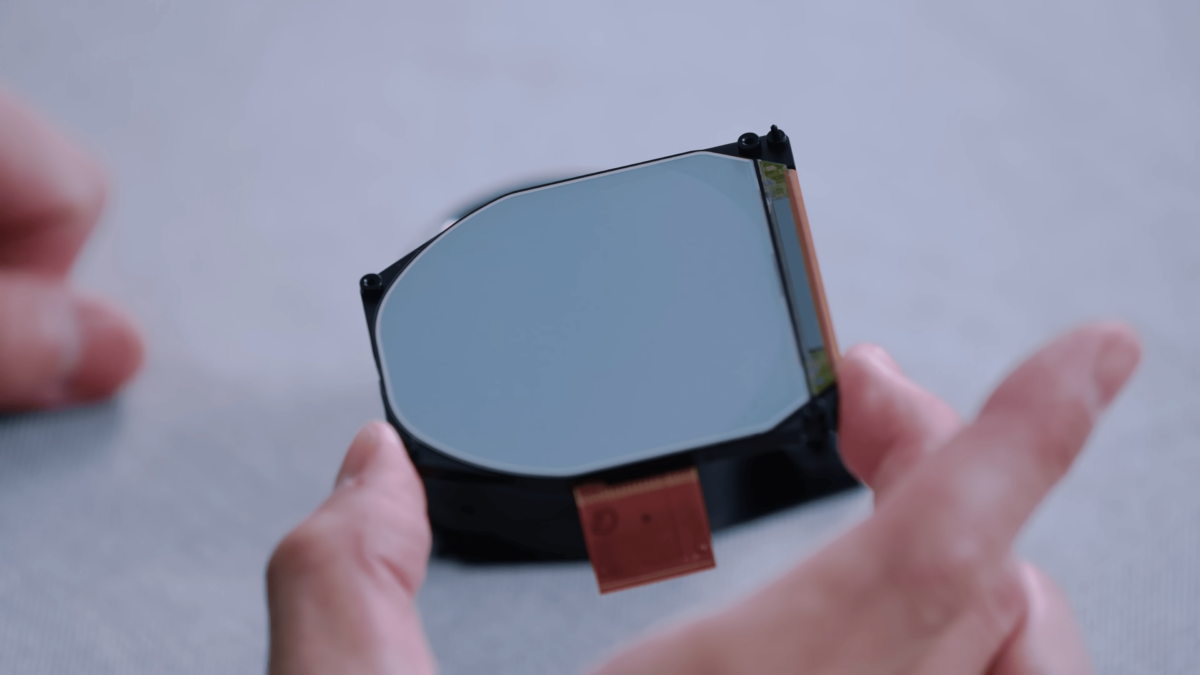PSVR 2 display has fewer subpixels per pixel than the PSVR

Is the PSVR 2's resolution leap smaller than expected? An analysis shows that the pixels offer fewer subpixels than in the predecessor.
Sony engineers disassembled the Playstation VR 2 on camera, and the repair specialists from iFixit recently followed up with their own disassembly. The "teardown" revealed findings about the repairability and an interesting detail about the display.
When technician Shahram Mokhtari took a closer look at the OLED display of Sony's new VR headset, he noticed a subpixel structure that could be a drawback compared to the previous model. One pixel of the PSVR 2 seems to consist of fewer colored subpixels than in the old Playstation VR.
PSVR 2: A regression in image sharpness?
The highly magnified image, sharpened with a Photoshop filter, shows that the colored, self-illuminating dots of the PSVR 2 are arranged in a "diamond shape." This is probably a typical OLED "PenTile" matrix. A kind of grid structure is used, in which neighboring pixels divide some subpixels among themselves.
Last one, ran it through a PS filter and I think it's a pretty clear match for diamond with all that noise out the way. pic.twitter.com/4Hn3guPnzF
AdAd— Shahram Mokhtari (@MokhtariShahram) February 25, 2023
On the screen of the first PSVR, however, there are still clearly defined pixels consisting of three subpixels each (red, green, and blue). This "RGB stripe" arrangement was a clear unique selling point in 2016 and a rarity in the OLED field. Although Sony's VR headset did not offer an overly high resolution of 960 x 1080 pixels, the picture looked comparatively sharp.
At the same time, the clearly delineated pixels of the PSVR also made the screen structure clearly visible - almost like looking through a screen door. This is what the VR term "screen door effect" means.
The PSVR 2, on the other hand, probably only has the full number of subpixels for the color green. The red and blue dots next to it are only half as many. The result is a slightly blurrier image than LCD screens with the same resolution, especially in the red and blue areas. Converting graphics for output on the "PenTile" structure reduces the sharpness.
OLED in VR headsets
Sony's switch to the "PenTile" layout is not surprising, though, since it is widely used in this field. Older OLED headsets like the Samsung Odyssey+, HTC Vive or Oculus Rift also used the technology.
The PSVR 2 seems to have a coating to mitigate the screen door effect. It diffuses the light so that dark gaps are less noticeable. However, it also results in a slightly blurrier image impression.
Another from the PS5 main home screen pic.twitter.com/SxmiEDvcog
— Shahram Mokhtari (@MokhtariShahram) February 25, 2023
The OLED display of the Playstation VR 2 still has advantages. It is far ahead in terms of black value, vivid colors, and HDR effect. In Gran Turismo 7, for example, I intuitively have to squint when the reflection of the low sun blinds me.
Disadvantages like the Mura effect (spots or streaks due to different illumination), on the other hand, are perceived very differently or not at all by different users, as the controversial discussion in MIXEDCAST during the PSVR 2 launch showed.
Note: Links to online stores in articles can be so-called affiliate links. If you buy through this link, MIXED receives a commission from the provider. For you the price does not change.